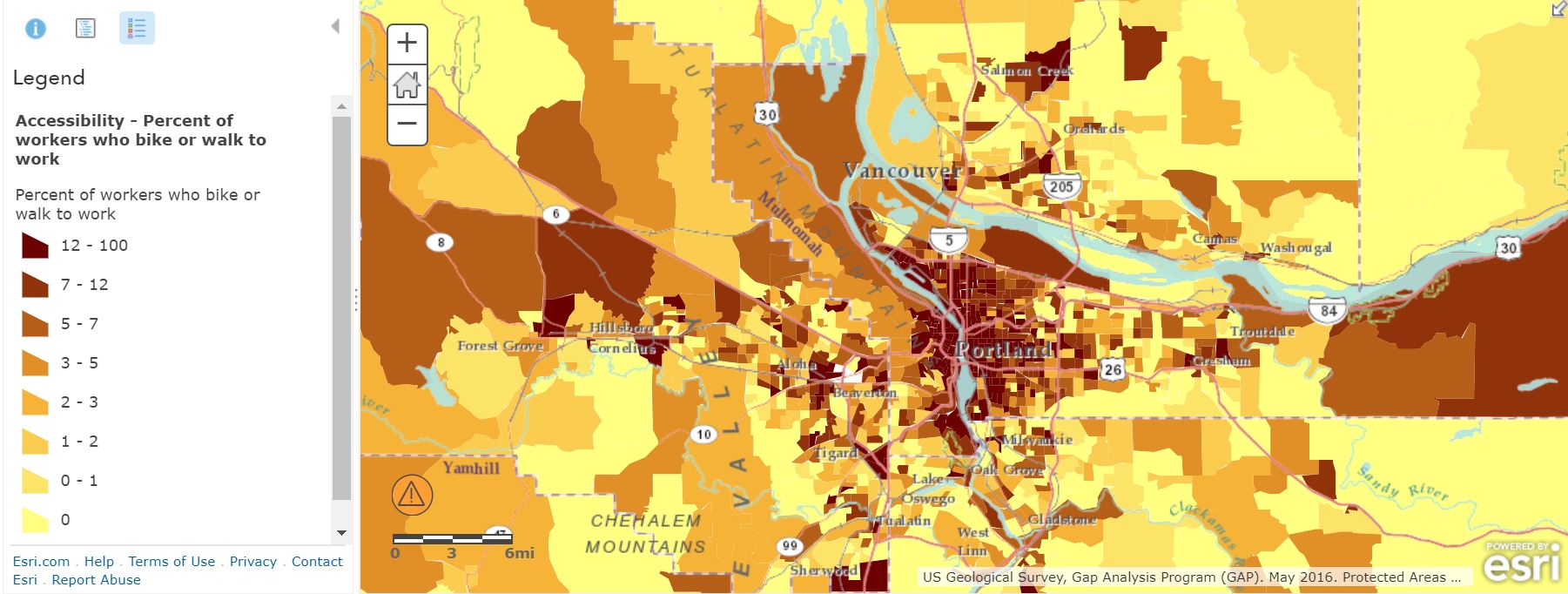- Home
- :
- All Communities
- :
- Industries
- :
- Education
- :
- Education Blog
- :
- Teaching with the EPA EnviroAtlas
Teaching with the EPA EnviroAtlas
- Subscribe to RSS Feed
- Mark as New
- Mark as Read
- Bookmark
- Subscribe
- Printer Friendly Page
The number of mapping and analysis tools that are built on web-based GIS tools and data services continues to expand, offering educators exciting and innovative ways to teach core concepts, skills, and spatial thinking. The EPA EnviroAtlas is an excellent example of this. Its goal, according to ASPPH Environmental Health Fellow Jenna Hartley, who creates educational materials using EnviroAtlas, is to develop highly informed local decision-makers by equipping users with data and information to answer many environmental questions. The Atlas can be used in geography, environmental science, hydrology, economics, and other courses, from middle school through high school, and in my view, makes an excellent resource for instructing at the university level as well. According to Hartley, the educational resources have been used with success in multiple university classrooms.
I found the atlas to be easy to use. It is based on the ArcGIS platform, so its navigation and list of data layers will be familiar to users of ArcGIS Online and ArcGIS Pro. The EnviroAtlas contains over 100 layers for the USA covering three main themes--ecosystems and biodiversity, people and built spaces, and boundaries and natural features. These layers cover a wide range of topics, from water use to people commuting by bicycle, from protected lands to at-risk species, and much more. Each layer can be toggled on and off. What's more, the working map session can be saved for later use. The "save session widget" saves the EnviroAtlas data layers that you are working with locally to your browser cache. You can even save the session to a file that you can share with others as well.
As one of my main concerns in education is to have students be critical of data, including mapped information, I was very pleased to see that the metadata on the EnviroAtlas is plentiful and easy to understand--the sources, scale, date, and other information about each of the map layers. Using the atlas, I was quickly able to make maps, for example, fruit yields in thousands of tons per year, and was fascinated by the patterns, noting my homeland in western Colorado stood out with its magnificent orchard lands (below).
A few of the layers I was curious to explore were not available during my last session with the atlas, and I was surprised and impressed to see a message indicating that an email was being automatically sent to the EnviroAtlas administrators about those very layers I was trying to access. That's a great service that I wish more web mapping apps had!
Thanks to educator Jenna Hartley, a multitude of educational materials can also be used to teach with the EnviroAtlas. In these lessons, students engage in highly interactive hands-on learning where they are introduced to data visualization and can build their analytical, geospatial and decision-making skills. The lessons can also be recreated for classrooms without access to computers or the internet. Concepts the lessons address include ecosystem services, watershed geography and management, the water cycle, air quality, urban planning, biodiversity, and decision-making. All lesson plans include an outdoor portion and align with both the NGSS (Next Generation Science Standards) and individual state Science Standards.
A university professor had this to say about the atlas: "Promotes critical thinking, uses actual data and students can ask many types of environmental questions and explore the tool in search of answers.” A high school AP environmental science teacher said, "Where do I start? Learning about EnviroAtlas with the EPA will truly have an impact on not only student learning, but engagement into environmental subject matter. Using this data as a case study will allow teachers to bring a strong, in-depth perspective to learning.”
One of the most exciting things about many of today's web mapping applications, including the EnviroAtlas, is that the data layers can be used inside ArcGIS Online and even inside ArcGIS Pro. This greatly expands the utility of the EnviroAtlas to the ArcGIS Online environment where spatial analysis tools such as routing and overlay can be performed on the data. To do this in ArcGIS Online, select one of the layers, go to the layer list, and "access web service." Copy the URL, go to ArcGIS Online, modify the map, Add data from Web, and paste the layer there. I did this for workers who bike or walk to work, focusing on the walk and bike-friendly community of Portland, Oregon, below. This is really quite exciting and has enormous implications, because the hundreds of layers from the EPA EnviroAtlas can be used inside a GIS environment for further analysis! For a list of all of the data available in this manner with their REST endpoints, access this URL: https://enviroatlas.epa.gov/arcgis/rest/.

One of the EnviroAtlas layers--percent of workers who bike or walk to work--shown in ArcGIS Online.
For more information about how to use the Atlas, see these tutorials and videos.
You must be a registered user to add a comment. If you've already registered, sign in. Otherwise, register and sign in.
-
Administration
78 -
Announcements
80 -
Career & Tech Ed
1 -
Curriculum-Learning Resources
257 -
Education Facilities
24 -
Events
72 -
GeoInquiries
1 -
Higher Education
595 -
Informal Education
281 -
Licensing Best Practices
91 -
National Geographic MapMaker
33 -
Pedagogy and Education Theory
224 -
Schools (K - 12)
282 -
Schools (K-12)
272 -
Spatial data
35 -
STEM
3 -
Students - Higher Education
245 -
Students - K-12 Schools
128 -
Success Stories
36 -
TeacherDesk
1 -
Tech Tips
117
- « Previous
- Next »